Butterflies return to Botanic Gardens
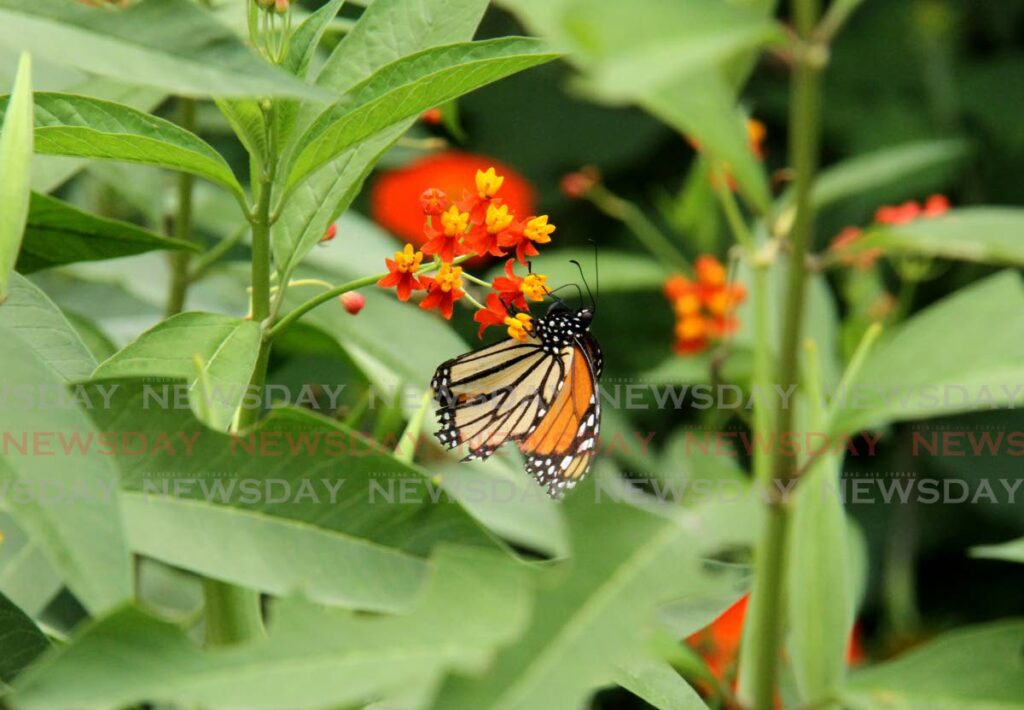
One by one, the butterflies are returning to the Royal Botanic Gardens in Port of Spain.
After starting in November, a group of volunteers, led by environmental activist and Serina Hearn of the non-governmental organisation Friends of Botanic Gardens of Trinidad and Tobago, created a garden of flower beds, which includes several host plants for native butterflies.
“The native plants have a relationship with the native insects, including the butterflies and the moths,” Hearn explains. “During the dry season, the rainy season, they wax and they wane with it. So we use native (plants).”
Host plants like milkweed are often overlooked and disregarded, cut down and put in landfills, a problematic nationwide habit.
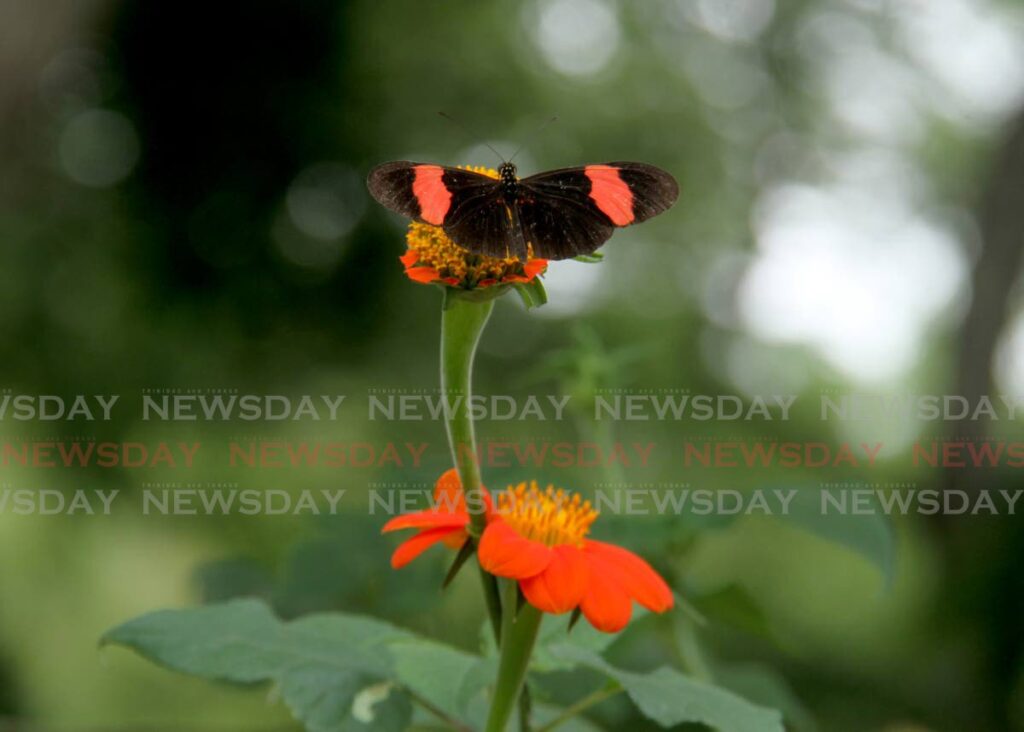
Butterflies and moths lay their eggs on host plants, which are usually specific to the type of butterfly or moth. The caterpillars also eat the plants after hatching. The decimation of native plants, therefore, naturally results in the decimation of butterfly species.
Hearn now wants to “bring the butterflies back home” to Port of Spain.
“I call this an act of repatriation for the butterflies, giving back what was stolen from them. We stole their native habitat,” she said. “These are all transplants, but we’re now finally honouring the beings that were here before us, and bringing them back has been a delight for us."
Hearn, with tireless assistance from the volunteers, began carving out a garden in a design inspired by the Fibonacci sequence, a series of numbers, which on a graph is shaped like a spiral.
The group has just been given permission by the Ministry of Agriculture to extend it and plans to do so in the coming months.
The 204-year-old Botanic Gardens, where a sugar estate once stood, is one of very few enduring landmarks in the country’s capital. It remains an escape where one can reasonably expect relative quiet and clean surroundings.

The lawns are handsomely trimmed except for an overgrown brick structure where a miniature herb garden thrived at one time.
Having started only six months ago, the butterfly garden has already started to attract onlookers, volunteers and most importantly, the treasured butterflies.
Last week, in between heavy downpours, volunteers said they observed them returning in increasing numbers.
Species of butterflies, moths and caterpillars specifically seen at the gardens are now being documented on the website at
inaturalist.org, where at least eight observations have been made thus far. Anyone is free to upload their discovery, along with identifiers.
The project began with a 3D design. For the first step, the lawn was covered to block light, leaving all beneficial microbes in the soil.
“Six months later, no weeds, and amazing soil. No purchased mulch.”
Gary Naringsingh of T&T Tree Surgeons contributed with ground-up trees for the paths, and with leaves and grass clippings for the beds.
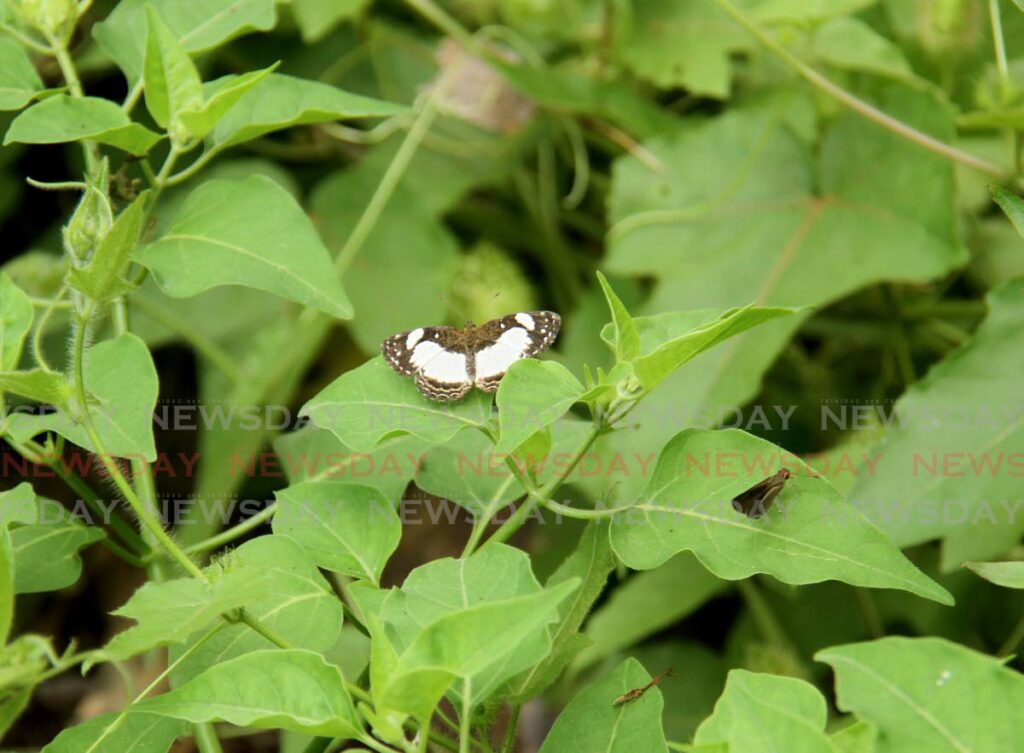
One volunteer, Jason Jaggernauth from We-native Ecoscapes, helped to lay out the grid and pound in the pegs before the volunteers began to lay down cardboard. Boxes, plastic bottles, coconut husks and cuttings were strewn across a section of the lawn, raising many eyebrows.
After probing questions and odd stares, Hearn explained the rationale for the garden to anyone interested in learning.
And one by one, people from all walks of life began offering to assist. Some have spent entire days at the gardens happily at work.
“I didn’t know what this woman was doing all by herself with mulch, working every day. ‘What is she doing?’” said Danielle Elliot, one of the volunteers.
Jaggernauth explained, “We were bringing the soil to life and actually recreating a whole ecosystem from the bottom come up. Transplanting would have been virtually impossible had the soil not been restored. Everyone currently plays a role.
“(Hearn’s) the designer, the artist. She has plans home in her safe somewhere,” Jaggernauth said, referring to her 3D model.
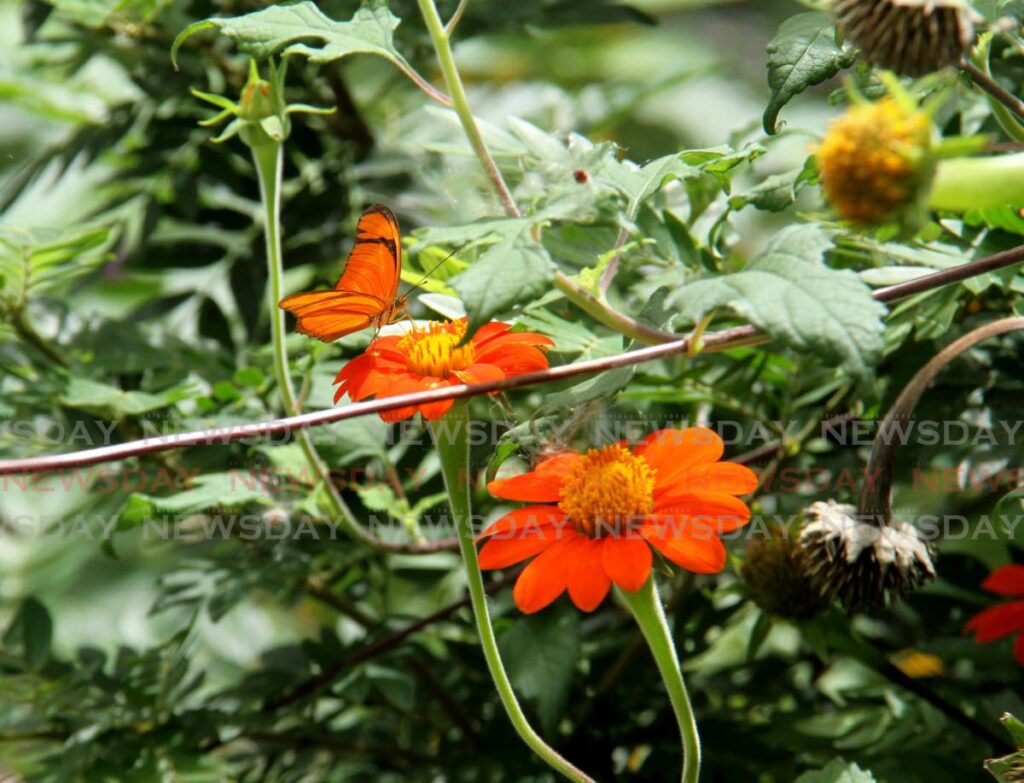
“Everybody gets information, they go home, do research and share knowledge. We all donate what we can, water bottles, you name it, and do whatever is required.
“We’re happy, getting to meet new faces, and we look forward to meeting more people.”
Wayne Ramcharan is another of the more dedicated volunteers, often working from 6 am until the gates close at 6 pm.
Ramcharan grew up farming produce and livestock, and says while he isn’t as familiar with the flower and butterfly species like some of the other volunteers, he’s been transfixed by the project and its objectives.
“I’m fascinated by the garden and the butterflies.
"I come every day. I just want to see it grow from strength to strength and I’m here to assist in any way I can. It doesn’t hurt. I enjoy it and I wish there was more time (in the day).”
Education, Hearn insists, is vital.
“We want to make a documentary to take to schools and to sponsors,” she said. “One step at a time…”
Respecting all animals and insects’ roles in the cycle of nature, she adds, is a crucial element of education.
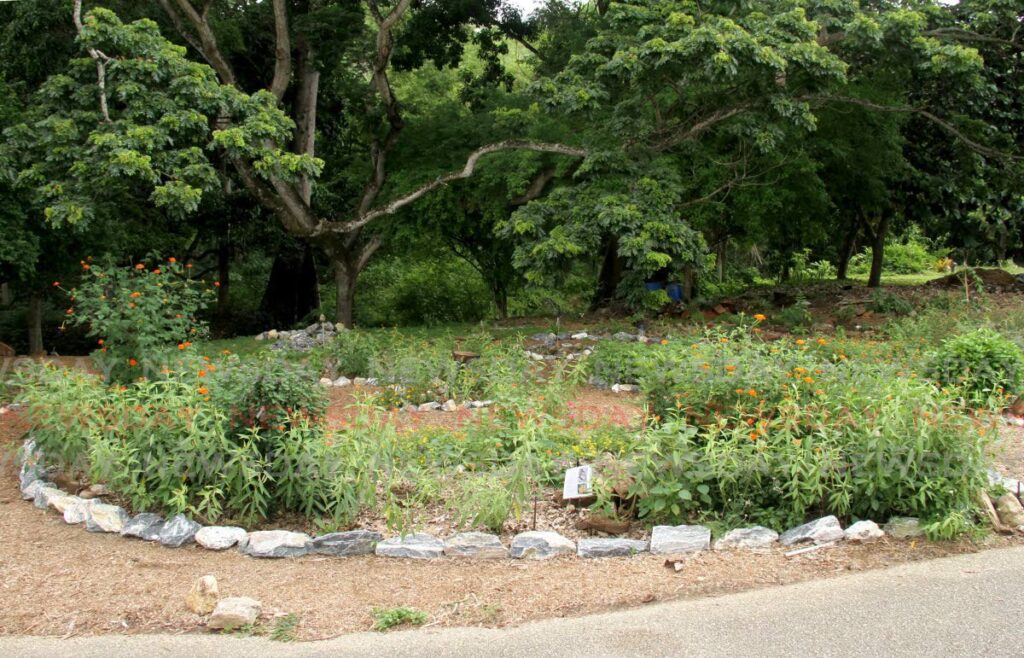
Pointing to a trail across the lawn, emanating from a large mound of loose dirt, Hearn said, “That giant bachac nest there is over 200 years old. We see them marching by every night, six o’clock. Giant bachac nest and I forbid (caretakers) from killing it.”
While bachacs are often destructive, chemicals that would typically be used to eliminate them, and their nest, Hearn said, would be even more harmful and destructive.
“We have to think about what we’re doing to the bugs as well. Every time you put poison in something, it has a whole reaction. This is about living in harmony with everything.”
Ultimately, the concept of attracting butterflies to their natural habitat is simple.
“If you plant what they want,” Hearn said,”they will come of their own free will. That’s the bottom line.”
The emperor butterfly, namesake of the adjacent zoo, is no longer seen in Port of Spain. They anticipate its eventual return, like that of the Monarch butterfly, which is now seen with relative frequency.
The splendour of the gardens in its heyday is well documented as Hearn recalls, in Charles Kingsley’s 1871 book At Last: A Christmas in the West Indies.
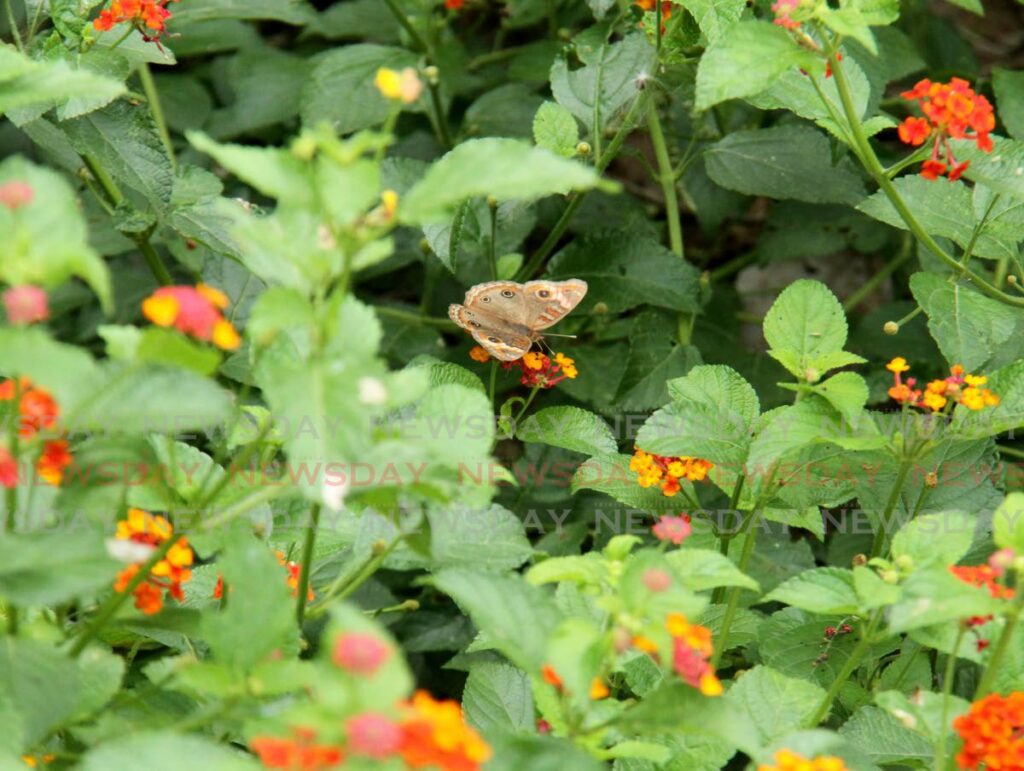
By today’s standards, Kingsley, a Victorian-era novelist and historian, would likely be discredited on account of overt stereotyping and elitism. But in his book, Kingsley enthuses over the Botanic Gardens. He paints a vividly gracious picture of his surrounding as a Garden of Eden of sorts, detailing the abundance of brilliant butterflies, birds and flora around him, which elude the gardens today.
“If you look at (Kingsley’s) description,” Hearn said, “the habits, in the pictures of them, half of them do not have the host plants because they do not know what they are.
“Even back in the 30s, 40s, 50s, they had no idea they were going to kill the planet – because that is what we’re doing. It was just taken for granted.”
Yet problems associated with the decimation of butterfly colonies transcend the Botanic Gardens and are widespread across TT, exacerbated by a lack of action from the people in authority who do know better.
Hearn identified two problematic practices of the Community-based Environmental Protection and Enhancement Programme (CEPEP), for instance.
The first poor habit, she said, is the cutting and dumping of organic waste in garbage bags, which creates dangerously high levels of methane gas. She lamented the daily dumping of “methane bombs” at landfills, which has drastic direct and indirect consequences for both the environment and personal health and safety.
The other is cutting and dumping certain species of plants, which would better serve the environment by being left alone, especially those that are host plants for butterflies. What is cut, she says, should be composted.
These practices are not limited to CEPEP workers alone, but having engaged the line minister on the matter, she has argued that education, awareness, and systematic changes are essential.
Another volunteer told Newsday the garden has given him a new appreciation for life.
“This is not a simple garden with butterflies flying around. This (symbolises) growth and understanding who you are as a person, understanding that life is way more than we think it is.
“And of recent times, how life has changed, coming together as communities, forming this kind of energy…I was amazed by this, everybody putting in and taking responsibility for themselves to be here.”
Hearn said the garden and similar gardens also have the potential to stimulate eco-tourism.
“We do have 760 (species of) butterflies and moths. It’s massive for this tiny island, because we were part of Venezuela. This is a living butterfly museum, if you like.”
There is a long way to go to bring butterflies back to ideal numbers, but with consistent volunteer support and adequate corporate support, Hearn says the project can certainly be sustainable and have an impact for decades to come


Comments
"Butterflies return to Botanic Gardens"